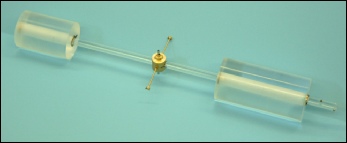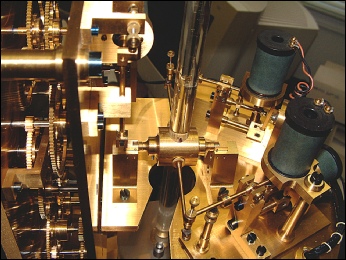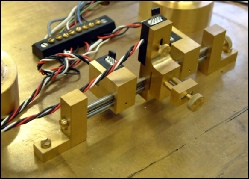
Precision Horology
Q2 PENDULUM


The pendulum assembly consists of two fused quartz bobs of unequal sizes with a fused
quartz pendulum rod between them. The rod has a trunnion mounted at its center. Originally,
I had planned to use a knife edge suspension as the pendulum support. Instead, I
decided to use a form of cross spring suspension known as a C-
The Q2 pendulum in its original configuration utilizing knife edge suspension. This
was subsequently changed to a pair of C-
A view of the movement showing the C-

The three Hall Effect devices mounted below the pendulum bob that control the logic and impulse